HOME
GALLERIES
Port-au-Prince, December 2017
I went to Port-au-Prince, Haiti, in December 2017 to participate in the 5th Ghetto Biennale. I had a project accepted for the grand event but I feel I took my best pictures on the margins, while accompanying other artists on their rounds. I'll post a page on my own project when I've written it up...
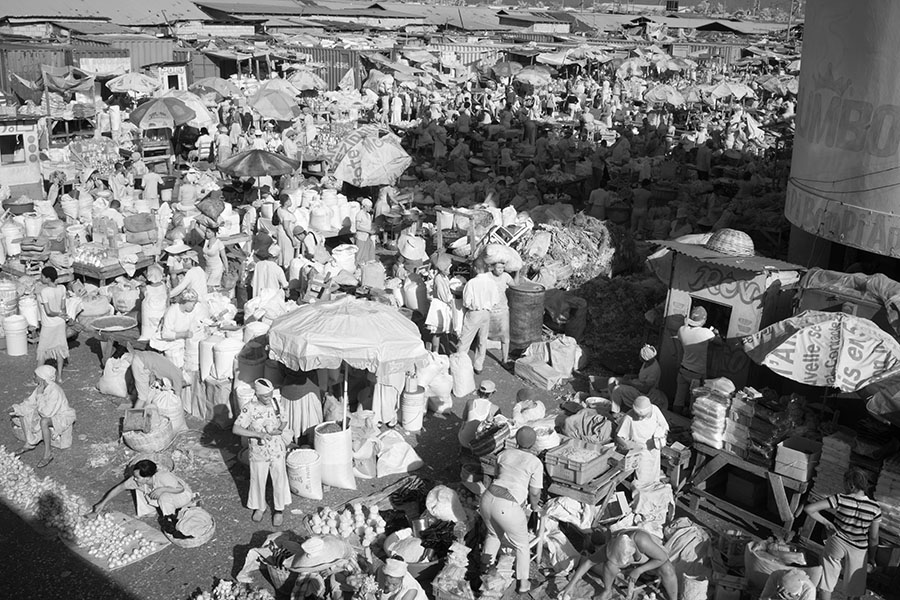
Self Portrait, Marché Croix des Bossales, Port-au-Prince, Haiti This really is a self portrait! You can see my shadow falling across the display of the fruit vendor in the lower left. But, the real reason this picture is interesting because it gives a sense of the hive of activity that is this corner of the market. I did seriously consider processing out my shadow with Photoshop before sharing this one, but decided against it. I can always go back.
The story of this picture and the next is a bit of an adventure. I'd earlier been to the covered Iron Market/Marché Hippolite and been taken under the wing of one of the vendors there, so when my fellow Ghettoists, the photographers Giuseppe De Angelis and Michael Radford, planned a trip to the bigger open air market behind and to the north of the Marché Hippolite they asked me to come along, make introductions, translate, (they don't speak French) and provide whatever local knowledge I had. My local knowledge wasn't actually that strong, because, while I had lived in Port-au-Prince for four years, during that time I never went to the Marché Croix des Bosalles. Haiti is not as dangerous as its reputation. When I lived there, both Trinidad and Jamaica, popular tourist destinations, had higher murder rates. But, just as there are neighborhoods in Kingston (or Washington DC) that are a bit iffy, there were and are neighborhoods in Port-au-Prince best approached with a great deal of caution. Croix des Bossales was definitely one of them during my time in Haiti. I never had an official reason to go, and it was off limits otherwise, reputed to be tightly controlled by bases, which is Haitian for "gangs". It's still dicey. My vendor friend took us in through the back of the Iron Market, and straight to the boss of the section, who had a little shack of an office in the lumber area pictured to the left of the photo below. I'm not sure where precisely he stood in the continuum between state and criminal power, or where he stood in either hierarchy (or both?). But he was definitely the boss, and someone to be reckoned with. We presented ourselves with dignified respect, and explained our mission to document the market photographically. He got it, sized us up as harmless, and was then very helpful, suggesting a particularly good vantage point and detailing a small group to guide us there and get us a rickety handmade ladder so we could climb to the roof of the of one of the old shop buildings on a feeder street, whence we worked our way to the edge of the next building overlooking the market from the east. It was a bit of a labyrinth, but this photograph, and the one below, were among the results for me. Definitely worth it! There was also a tangible price, which the minions made it clear we'd better pay, but I didn't consider that a problem, because it was upfront and very reasonable (about fifteen U.S. dollars if memory serves) given the service provided.

Marché Croix des Bossales, Port-au-Prince, Haiti Here is the market in panoramic view from a slightly different vantage point, giving an idea of how wide it is, and how much ground it covers. The market continues for two or three hundred feet off to the left of the picture frame, and rather more than that off into the distance to the right. It's the main market for a metropolitan area of something over two million people, a hub of wholesale and retail distribution for all kinds of products. To the left, lumber, to the right, food. It's big enough that I think you could spend weeks figuring out the geography of it and the products that are sold in individual areas, and of course years to learn the community and its folkways.
You can see superstructures of the freighters unloading in Port-au-Prince's harbor in the background. This was always the big market behind the port, and in the day there was a big cross (croix in French) standing in the middle of it, one of the first things the survivors of the middle passage saw as they were unloaded and brought ashore. It must have been an especially powerful image as they approached it to meet their fate, as the market of those days included a section for selling and buying people. A bossale was a slave born in Africa, so Marché Croix des Bossales, is a name with powerful and multi-layered resonances.
This (and the other pictures on this page) are shot with my infrared camera, and this one is a stitched panorama comprising eight frames. It took a long time to create this picture. Urban panoramas in the close and middle ranges are hard. People move, so their images mis-stitch into ghosts (parts or doubles of people) so I had to spend a great deal of effort masking one version of a number of people out, to allow their other versions to represent them. Since it took so long I got to know the images of the people quite well and became fond of them. And, the old and intractible problem of horizontal lines is very strong in the power lines in this picture, and fixing the breaks in them took considerable time in Photoshop. There is an enormous amount of detail in this picture, and printed very large it looks good.
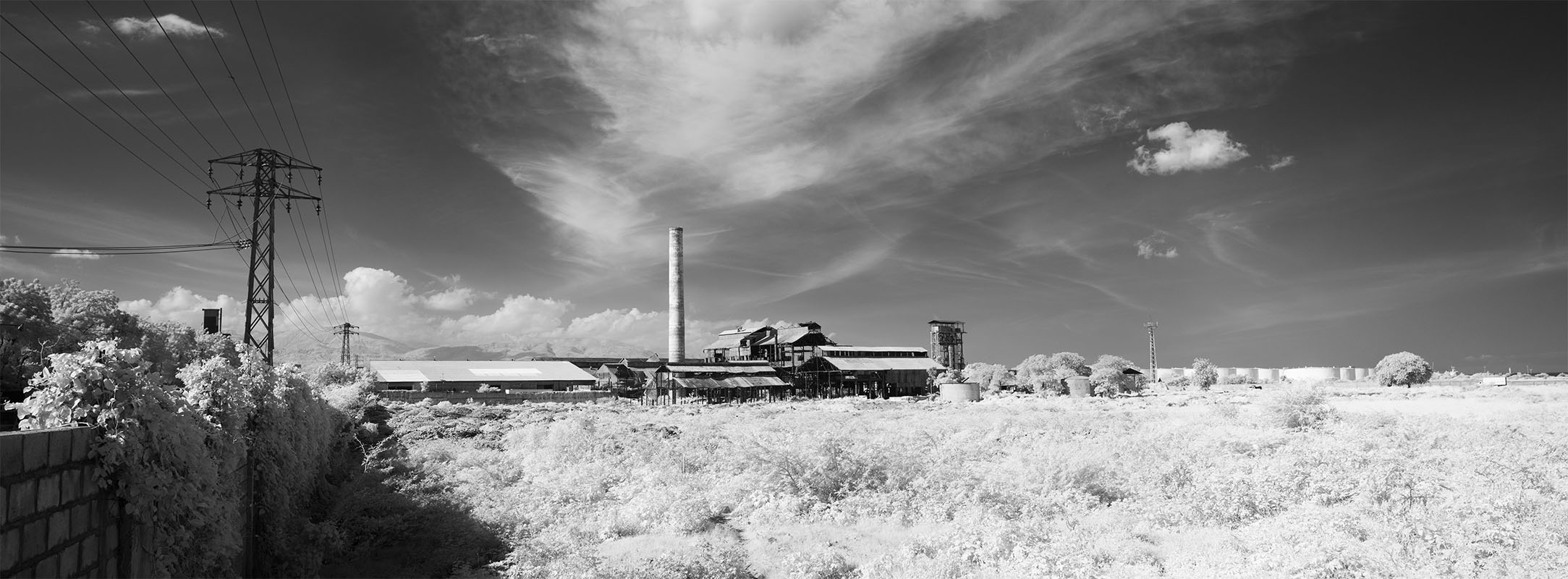
HASCO, Port-au-Prince Haiti's wealth was in high value tropical agricultural products, cotton, sugar, indigo, and the like. Over the years, the luxury value of these things have diminished, but for a good part of the Twentieth Century sugar was huge in the economy of the country, especially in the Cul-de-Sac, the valley of the capital of Port-au-Prince which opens into the Gulf of Gonâve. The Haitian American Sugar Company (HASCO) had acres and acres of sugar cane rolling up the Cul-de-Sac, and the ruin you see above is the sugar mill, right between downtown Port-au-Prince and downtown Cité Soleil. This plant is still known as HASCO, and, being big and unique, serves as a landmark. When I lived in Port-au-Prince a corner of the mill was still active with a continuous still for making alcohol. You could buy pure ethanol in the grocery store for the price of an industrial product. My bottle lasted for years, since I wasn't so foolish as to drink it. It's great for cleaning lenses and photographic equipment...
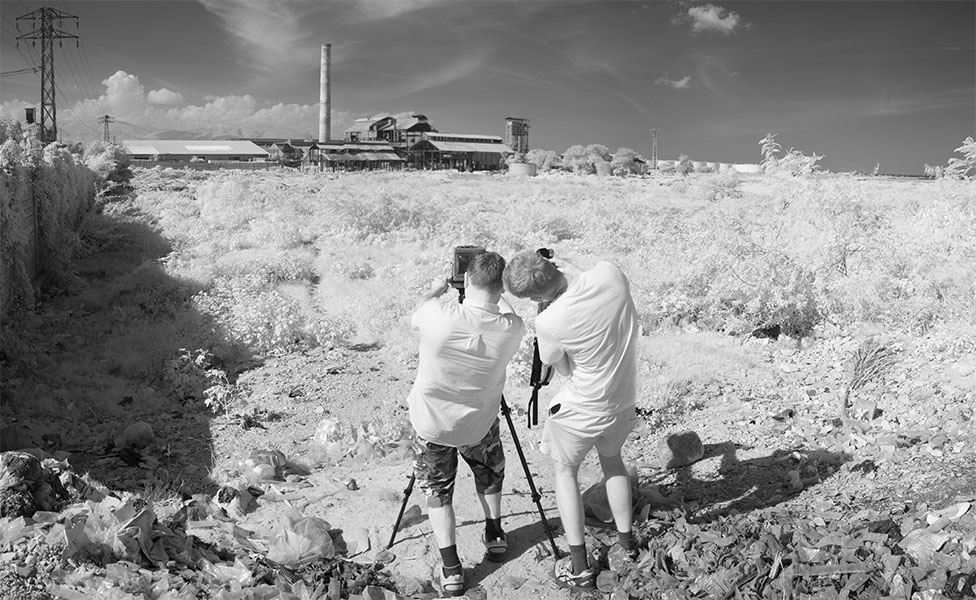
Working Photographers, HASCO, Port-au-Prince, Haiti A slightly different view, with Giuseppe and Michael setting up their 4X5 Wista Field Camera for their photograph of the Hasco Plant. These guys impressed the hell out of me, as they not only worked in the field with this -- I don't want to say cumbersome, maybe "complicated" -- setup, but they developed their sheet film in their hotel room and contact printed them to display at the end of the Ghetto Biennale event. They were often in dicey neighborhoods in the field, so they worked very fast, tripod up and set, camera on, no shifts or tilts, compose, focus, load and expose. I've only shot 4X5 once in my life, and using equipment like that I'd have spent hours setting up and composing... This was an easy spot, no one was around us as we slipped through the breach in the HASCO property wall, but of course they were in the groove and still worked fast. Giuseppe's on the left, at the camera, Michael on the right with the spot light meter.
Both of these photos are stitched panoramas built up from three exposures each.
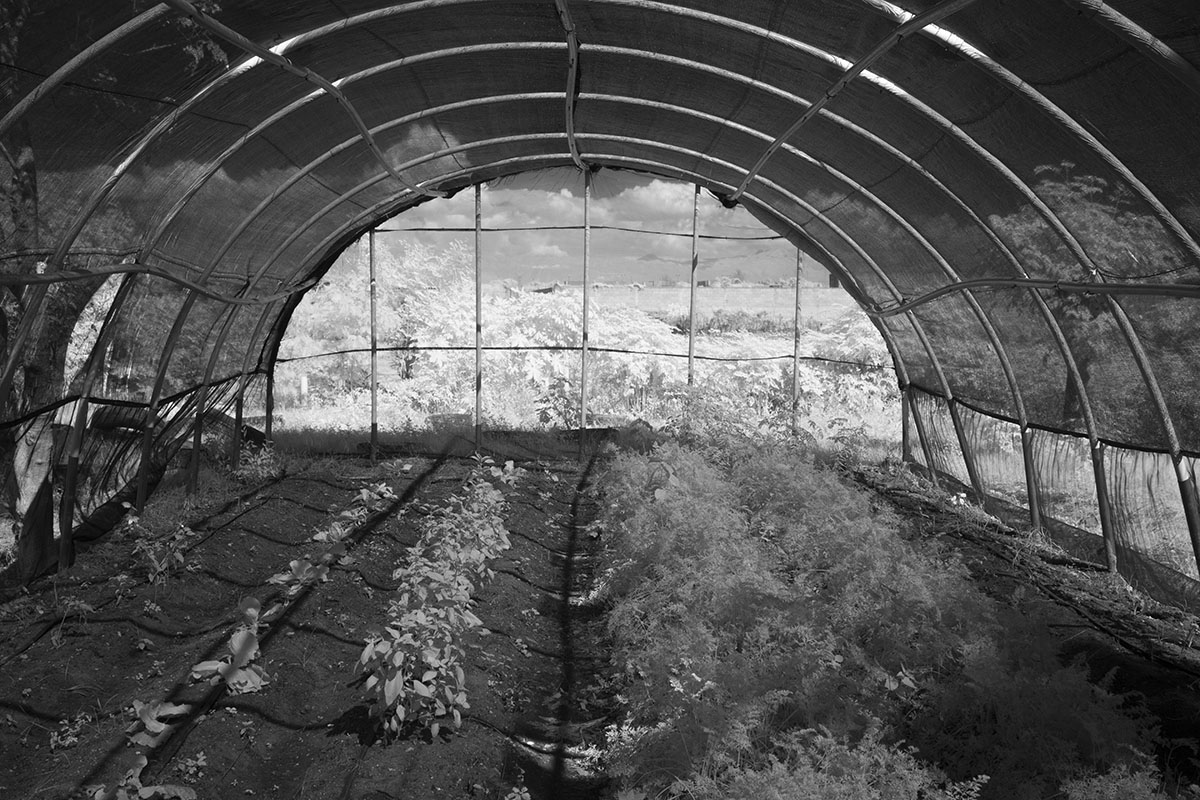
Greenhouse, Cité Soleil, Haiti This was something quite different. Another day I went with Lee Lee when she went to buy plants and make connections. Lee Lee is an artist in Maine who runs the Seed Barn, supporting diverse heirloom and organic farming. Was her tree planting project "art"? It was a bit of a stretch for me, but she carried it out in the most intensely mindful way and it was certainly far more important than anything any of the rest of us were doing. Her connection into the Grand Rue community was deeper than any of the GB foreigners with the possible exception of Leah Gordon, the organizer of the Ghetto Biennale. Her trip this morning took us to a nursery in Cité Soleil run by a group called SAKALA. The picture above was shot though one of their PVC greenhouses across the industrial-zoned (but never much developed) area that separates urban Cité Soleil form the rural sectors to the north. I can't speak to the history, background, or other activities of SAKALA, but their nursery is an amazing, even critical, resource.
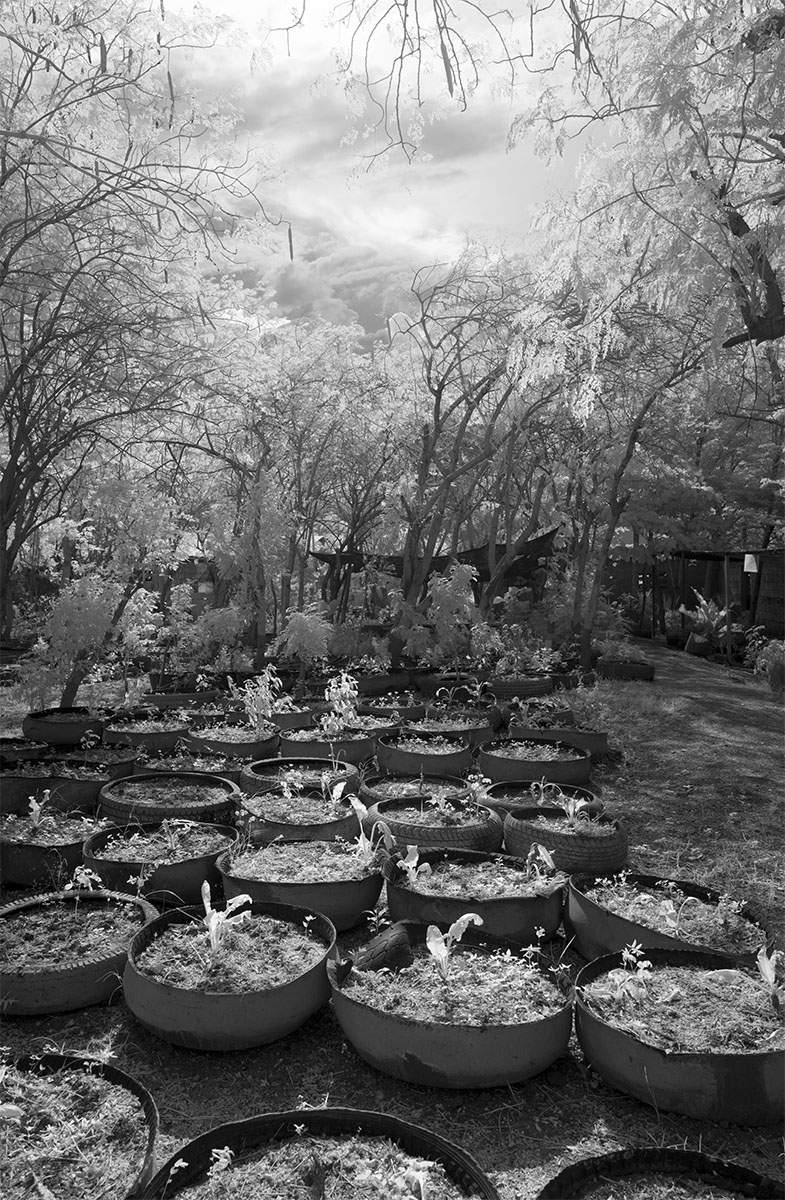
Nursery, Cité Soleil, Haiti This is the picture of the SAKALA nursery I gave to the Seed Barn. It's a vertical three frame panorama, only because I didn't have a wide lens with me. The containers for the tree saplings are worn out tires turned inside out.
GALLERIES





